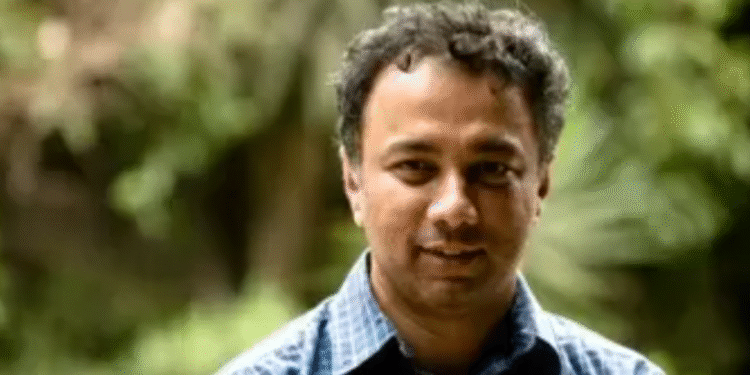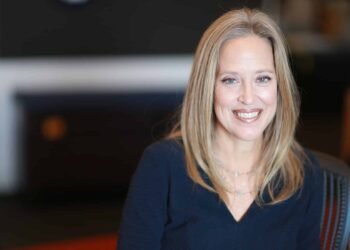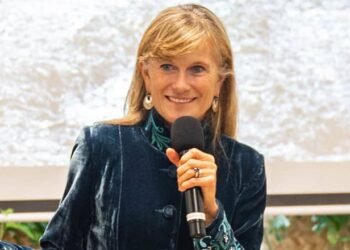What if the solution to energy poverty wasn’t about giving away technology, but about building sustainable businesses that empower communities?
This question drove Harish Hande, a social entrepreneur who revolutionized rural electrification in India. With a PhD in Energy Engineering from the University of Massachusetts, he founded SELCO in 1995 with a visionary mission.
SELCO installed over 95,000 solar systems, directly improving the quality life for more than 400,000 people. The organization proved that sustainable energy solutions could be both commercially viable and socially transformative.
Recognized as an Ashoka Fellow in 2008, Harish Hande‘s work demonstrates how decentralized renewable energy can combat poverty and climate change simultaneously. His approach created lasting change where traditional methods failed.
Key Takeaways
- Harish Hande founded SELCO in 1995 to address energy poverty through market-based solutions
- Over 95,000 solar installations have directly benefited 400,000+ people
- Holds a PhD in Energy Engineering from University of Massachusetts
- SELCO maintains commercial viability while serving underserved populations
- Recipient of Ashoka Fellowship (2008) for innovative social enterprise model
- Demonstrates how sustainable energy can simultaneously address poverty and climate change
- Proves decentralized solar power can create lasting community empowerment
Introduction to Harish Hande and the Energy Access Challenge
Imagine entire communities living without reliable light after sunset. This was the reality Harish Hande encountered across rural India. His journey began with recognizing that energy poverty wasn’t just about darkness. It was about lost opportunities and environmental damage.
The Energy Poverty Crisis in Rural India
About 57% of India’s population lacked reliable electricity access. This created a cycle of poverty that affected health, education, and economic growth.
Families used kerosene lamps for light. These produced toxic fumes that harmed people’s lungs. Children struggled to study after dark. Their education suffered without proper lighting.
Small businesses couldn’t operate in evenings. This limited income opportunities for many families. The situation seemed hopeless for millions of people.
Early Inspiration and Academic Foundation
Harish Hande’s perspective changed during his Master’s research. He visited the Dominican Republic and saw something remarkable.
Poor communities there used decentralized solar power systems. These provided reliable electricity without grid connection. The technology worked well in remote areas.
This experience inspired his academic path. He pursued a PhD at the University of Massachusetts. There he specialized in rural electrification and sustainable energy solutions.
Questioning Conventional Assumptions About the Poor
Most experts believed poor communities couldn’t afford clean energy. They thought these communities couldn’t maintain complex systems. Many assumed social goals conflicted with commercial viability.
Harish Hande challenged all these assumptions. He proved that poor families could afford solar electric light through proper financing. He demonstrated they could maintain technology with training.
His work showed that energy services could be both socially beneficial and commercially sustainable. This breakthrough thinking laid the foundation for SELCO’s innovative model.
The Innovative SELCO Model: Redefining Energy Access
How do you make solar power accessible to communities that live on less than $2 a day? The answer lies in a revolutionary approach that combines smart technology with deep customer understanding.
SELCO created a model that works where others failed. It focuses on three critical pillars: customized solutions, accessible financing, and reliable service. This triple strategy makes clean energy truly available to those who need it most.
Customized Solar Solutions for Specific Needs
SELCO doesn’t sell one-size-fits-all systems. Instead, they design solar solutions based on what people actually do. A bamboo basket maker gets lighting for evening work. A midwife receives a headlamp for nighttime deliveries.
This customized approach ensures the technology serves real needs. Families can choose from various product offerings. These include solar lighting systems, water heaters, and cooking stoves.
Each solution addresses specific daily challenges. The right technology makes all the difference in adoption and usage.
Doorstep Financing Partnerships with Local Institutions
Most energy services cost several months’ income for poor families. SELCO solved this through innovative financing partnerships. They work with rural banks, cooperatives, and self-help groups.
Institutions like Malaprabha Grameen Bank provide loans directly to customers. This makes credit accessible at the village level. Families can afford systems through manageable monthly payments.
A basket-making family earning ₹40 profit per basket provides a perfect example. Solar power enables additional evening work that covers their loan payments. The system pays for itself through increased productivity.
Maintenance and Service at the Customer’s Doorstep
Technology only works when it’s maintained properly. SELCO provides routine check-ups and training right at customers’ homes. This door-step service builds trust and ensures system longevity.
Technicians visit regularly to maintain the solar systems. They also train family members on basic upkeep. This approach prevents systems from falling into disuse.
The maintenance model proves that sustainable energy requires ongoing support. Reliable service makes all the difference in long-term success.
Through this comprehensive approach, SELCO demonstrates that the poor can afford and maintain clean energy solutions. The model creates lasting change without depending on subsidies or handouts.
SELCO’s Business Strategy and Operational Framework
Running a profitable business while serving the poorest communities requires an innovative operational framework that challenges conventional wisdom. SELCO developed a unique approach that combines social mission with commercial viability.
Building a Social Enterprise That Breaks Even
SELCO operates as a for-profit social enterprise with remarkable financial discipline. The company achieves break-even status despite serving clients where 75% earn less than $4 per day.
This sustainable business model proves that energy services can be both socially impactful and commercially viable. The organization maintains this balance through careful financial management.
Over 15 years, SELCO spent only $500,000 on capacity building. This demonstrates exceptional financial prudence for a social enterprise of its scale.
Vertical Growth and Product Diversification
In 2004, global market disruptions forced strategic adaptation. Germany’s Green Party subsidies caused solar panel costs to increase by 47%.
This supply chain challenge prompted vertical growth within the company. SELCO diversified its product offerings to include LEDs and CFLs.
The diversification strengthened the business against future market volatility. It also expanded the range of energy solutions available to customers.
Navigating Market Challenges and Global Supply Issues
SELCO faces competition from subsidized charities that undercut prices. These organizations often harm long-term sustainability in the market.
The company emphasizes loans rather than donations to prevent market distortion. This approach maintains healthy competition and proper pricing.
In the early 2000s, rapid expansion led to financial strain. The International Finance Corporation helped with restructuring during this challenging time.
Today, SELCO operates 25 service centers across multiple regions. The staff of over 150 ensures reliable delivery of services and systems.
The company’s annual turnover reaches $3 million while maintaining its social mission. This demonstrates that thoughtful business strategy can create lasting change.
Impact and Recognition of Harish Hande’s Work
Across rural landscapes, a quiet revolution in energy access has been reshaping lives and opportunities for thousands. The measurable outcomes demonstrate how thoughtful innovation creates lasting change.
Quantifiable Environmental and Social Benefits
SELCO’s installations have prevented 375,000 tons of CO2 emissions. This significant environmental achievement contributes directly to climate change mitigation.
Social benefits extend across multiple dimensions. Children gain study time with reliable lighting after dark. Families experience better health by eliminating toxic kerosene fumes.
Household incomes increase through extended working hours. The quality of life improves dramatically for over 500,000 people. Each solar lighting systems installation creates new economic possibilities.
Scaling Across Multiple States and International Reach
SELCO’s operations expanded across Karnataka, Andhra Pradesh, and Kerala. The model proved adaptable to diverse regional needs and communities.
International expansion reached Sri Lanka, demonstrating global applicability. This scaling shows the model’s robustness across different cultural contexts.
During COVID, solar-powered hospitals and health centers became critical infrastructure. Partners like the IKEA Foundation supported this vital expansion of energy services.
Magsaysay Award and Global Recognition
In 2011, Harish Hande received the prestigious Ramon Magsaysay Award. This recognition highlighted his pragmatic approach to empowering the poor.
The award citation emphasized the holistic impact combining poverty reduction with environmental sustainability. This dual benefit approach gained attention across the world.
Hande’s concept of making the poor into “asset creators” transformed how people view energy access. Ownership of solar systems becomes an economic asset that generates daily value.
His work has been featured at global forums including the World Economic Forum. The recognition validates that market-based solutions can serve marginalized communities effectively.
With over 120,000 installations completed, the model demonstrates remarkable scalability. Each system represents a family gaining control over their energy future every day of the year.
Conclusion: The Lasting Legacy of Community-Centric Renewable Energy
True empowerment comes when communities own their energy solutions, not just receive them. Harish Hande‘s work demonstrates this powerful truth through SELCO’s enduring model.
The organization continues innovating with school solar lamps and local maintenance programs. These solutions address specific community needs while creating economic assets.
This approach proves that the poor can indeed afford and maintain advanced solar power systems. It offers a blueprint for combining poverty reduction with climate action.
The legacy shows that meaningful change requires patience and deep understanding of local contexts. Renewable energy becomes a tool for equity when communities drive the process.
FAQ
What is the main goal of SELCO’s business model?
SELCO aims to make sustainable energy solutions accessible and affordable for low-income households. It focuses on providing customized solar lighting and power systems, supported by local financing and reliable service.
How does SELCO make clean energy affordable for the poor?
SELCO partners with local banks and microfinance institutions to offer doorstep financing. This allows customers to pay for solar electric systems in manageable installments, making clean energy services financially viable.
What types of solar energy systems does SELCO provide?
SELCO offers a range of solar lighting systems, heating systems, and other renewable energy solutions tailored to meet specific household and small business needs, improving quality of life and enabling economic activity.
Has SELCO’s work received any major recognition?
Yes, Harish Hande and SELCO were honored with the Ramon Magsaysay Award for their innovative approach to providing sustainable energy services and empowering underserved communities.
Does SELCO operate only in India?
While SELCO began and primarily operates in India, its community-centric model has inspired similar initiatives globally, demonstrating the potential for scalable, socially-driven clean energy businesses.
How does SELCO ensure long-term customer satisfaction?
SELCO provides ongoing maintenance and service directly at the customer’s doorstep. This commitment to after-sales support ensures system reliability and builds trust within communities.





